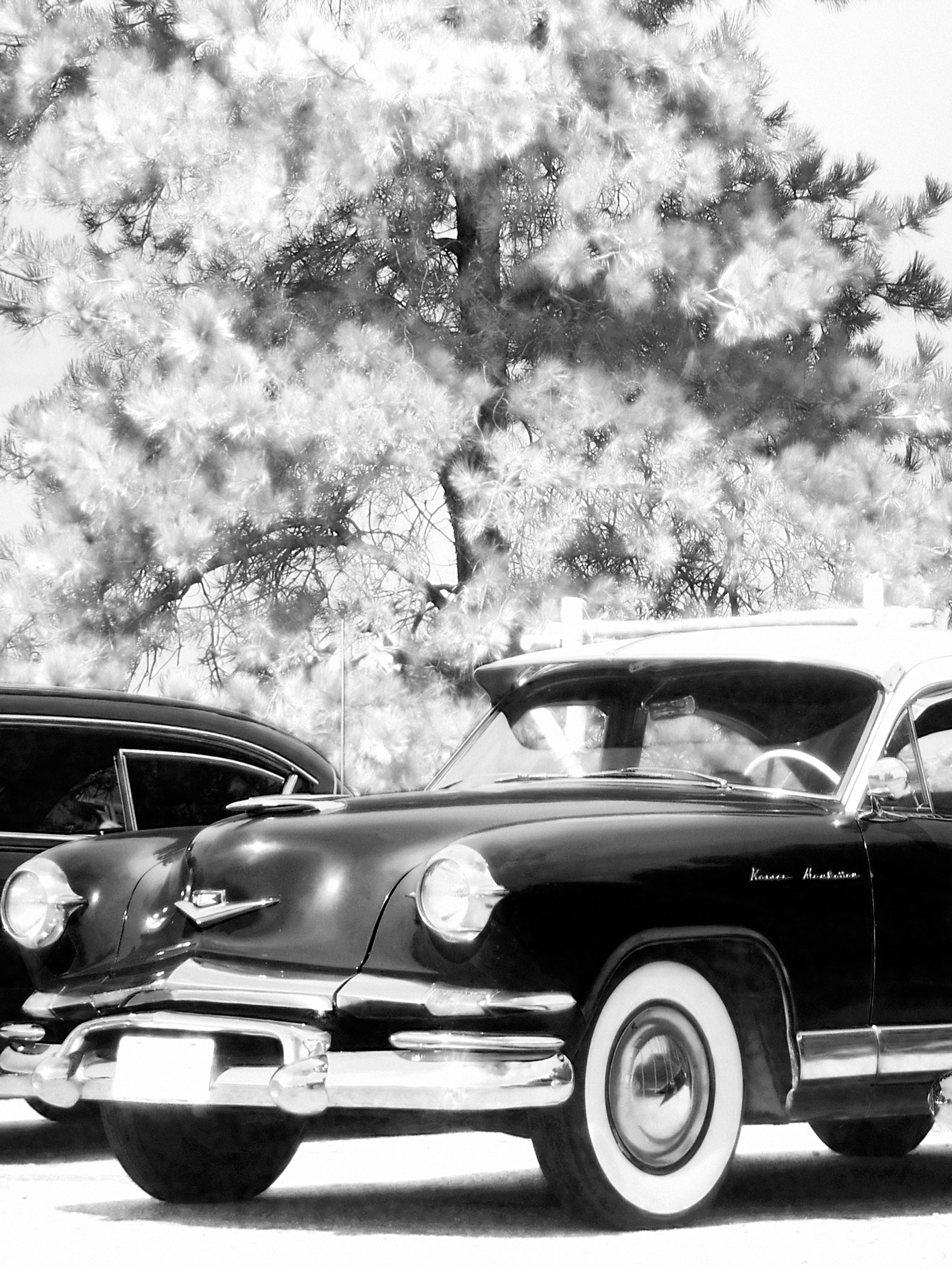Today’s Post by Joe Farace
“Kaisers are rarely seen and that\’s part of their appeal…”—Bob Merlis, writing abut the 1951-55 Kaiser
 There’s color, black & white and then there’s the kind of monochrome images that can only be captured with invisible light. The wavelength of every color is measured in nanometers (nm) or one billionth of a millimeter and light with wavelengths from 700 and 900nm is called infrared. Interestingly, at least to me, this band of infrared light is a thousand times wider than visible light and yet is totally invisible to our eyes.
There’s color, black & white and then there’s the kind of monochrome images that can only be captured with invisible light. The wavelength of every color is measured in nanometers (nm) or one billionth of a millimeter and light with wavelengths from 700 and 900nm is called infrared. Interestingly, at least to me, this band of infrared light is a thousand times wider than visible light and yet is totally invisible to our eyes.
You can capture infrared images in-camera with modified cameras or by using special on-camera filters but you can also create them after-the-fact using digital imaging software. How well you can accomplish that feat, as my old friend Rick Sammon likes to say is, “it depends.” Mostly it depends on whether you are trying to create a look that truly mimics a real “captured” infrared image or how closely you want your infrared facsimile to match the real thing.
When I was writing The Complete Guide to Digital Infrared Photography—not my chosen title— Dave Jaseck created a pretty good infrared emulation. I couldn’t find a link to it anywhere but if you know where to find it, please let me know and I will update this post. Here’s what Jasek said about the process: “You cannot create a real IR look in Photoshop but you can fake it if the picture has some blue sky and white clouds.” Craig’s Minnelly created some Photoshop Actions that he called InfraRedders that gave you control over the final look and the ability to modify it even after the images was rendered. I recently spoke with Craig and he informed me that these actions were no longer available and, sadly, my own copy have been lost in the process of changing computers over the years.
How I Faked It
 I originally photographed this Kaiser Manhattan (above right) in color at a car show in Thornton, Colorado. I don;t know what year this particular car is but he last Kaiser automobiles were produced during the 1955 model year. The photograph was made using an eight-megapixel Konica-Minolta X1 point-and-shoot camera that had a CCD sensor. While the sensor is small, (7.8 x 8.93mm,) the image quality is surprisingly good. The exposure was 1/125 sec at f/8 and ISO 50.
I originally photographed this Kaiser Manhattan (above right) in color at a car show in Thornton, Colorado. I don;t know what year this particular car is but he last Kaiser automobiles were produced during the 1955 model year. The photograph was made using an eight-megapixel Konica-Minolta X1 point-and-shoot camera that had a CCD sensor. While the sensor is small, (7.8 x 8.93mm,) the image quality is surprisingly good. The exposure was 1/125 sec at f/8 and ISO 50.
To create the faux IR version, I opened photograph in Photoshop and I cropped the right edge of the frame to put the emphasis of the image on the Kaiser automobile. The cropped file was converted to monochrome using the one of the Infrared presets in the black-and-white side of version 5 of Exposure Software‘s Exposure plug-in. That software is currently up to version 7 but version 5 is the most recent one that’s compatible with my 5K Mac and the operating system that runs it.
Next, Color Efex’s Glamour Glow filter was then heavily applied to a separate layer. Then I used Photoshop’s Eraser tool to selectively remove most but not all of the “glow” around the cars to put more emphasis on the automobiles.
 Life Pixel does a great job with IR conversions and they have done most the conversions for my Canon DSLRs and all my Panasonic Lumix cameras. This is not a paid or sponsored endorsement, just my experience.
Life Pixel does a great job with IR conversions and they have done most the conversions for my Canon DSLRs and all my Panasonic Lumix cameras. This is not a paid or sponsored endorsement, just my experience.
New copies of my book, The Complete Guide to Digital Infrared Photography are available from Amazon for $43 with used copies starting around $13.85 as I write this. My book Creative Digital Monochrome Effects has a chapter on IR photography and is available new from Amazon for $19.03 with used copies starting around four bucks, again as I write this.